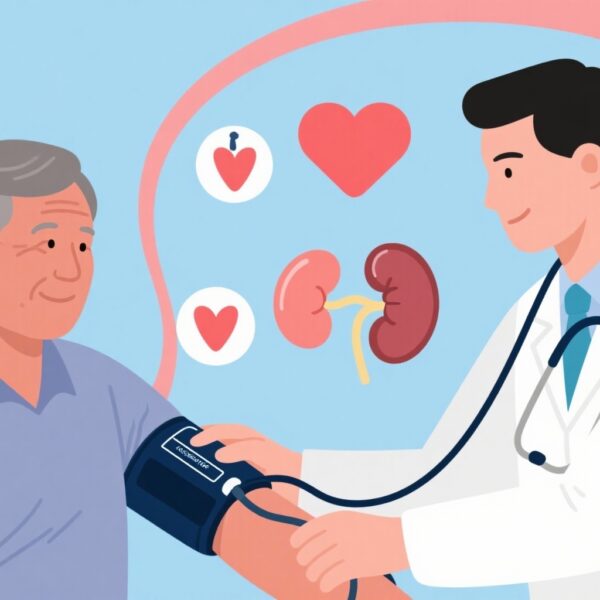Highlight
- Systematic review and meta-analysis of 484 randomized, double-blind, placebo-controlled trials involving over 104,000 participants established dose-dependent blood pressure-lowering efficacy of five major antihypertensive drug classes.
- Monotherapy at standard doses achieved an average systolic blood pressure reduction of 8.7 mm Hg; combinations of two drugs yielded greater reductions (14.9 mm Hg), with dose escalation providing incremental benefits.
- The study introduces a validated predictive model to estimate blood pressure-lowering effects of any antihypertensive combination, classifying regimens into low, moderate, or high-intensity categories based on efficacy.
- Findings support evidence-based therapeutic decision-making for personalized hypertension management, emphasizing the importance of drug combinations and dosing strategies.
Study Background
Hypertension remains a leading global risk factor for cardiovascular morbidity and mortality, necessitating effective blood pressure control to reduce the risk of heart disease, stroke, and renal complications. Various classes of antihypertensive medications—including angiotensin-converting enzyme (ACE) inhibitors, angiotensin II receptor blockers (ARBs), blockers, calcium channel blockers (CCBs), and diuretics—are widely used to lower blood pressure. However, the relative efficacy of monotherapy versus combination therapy, dose-response characteristics, and differences among drug classes have not been comprehensively quantified in a large-scale meta-analytic framework. Better defining these parameters is crucial for optimizing individualized treatment regimens and improving guideline recommendations.
Study Design
This study conducted a systematic review and meta-analysis of randomized, double-blind, placebo-controlled trials assessing antihypertensive treatment in adults. Inclusion criteria required trials to test ACE inhibitors, ARBs, blockers, CCBs, or diuretics with follow-up durations between 4 and 26 weeks, standardized fixed-dose treatment for at least 4 weeks prior to follow-up BP assessment, and availability of clinic systolic blood pressure measurements allowing calculation of mean placebo-corrected reductions. Crossover trials with inappropriate washout periods were excluded. A comprehensive literature search spanning inception through February 2025 was performed on Cochrane CENTRAL, MEDLINE, and Epistemonikos databases. The primary endpoint was the placebo-adjusted reduction in systolic blood pressure. Doses and drug combinations were categorized as low, moderate, or high intensity based on expected systolic BP reductions from a standardized baseline.
Key Findings
The analysis included 484 trials enrolling 104,176 individuals (mean age 54 years, 55% men), with an average baseline systolic blood pressure of 154 mm Hg. The mean treatment duration was approximately 8.6 weeks.
Monotherapy Results:
– Standard doses of monotherapy achieved a mean reduction in systolic blood pressure of 8.7 mm Hg (95% CI 8.2-9.2).
– The relationship between dose and efficacy was incremental, with each doubling of dose further reducing systolic BP by 1.5 mm Hg (95% CI 1.2-1.7).
– Monotherapy efficacy inversely correlated with baseline systolic BP; every 10 mm Hg lower baseline corresponded to a 1.3 mm Hg smaller reduction, underscoring diminished drug effects at lower starting pressures.
– Among 57 evaluated monotherapy regimens, 79% were classified as low intensity (<10 mm Hg reduction).
Combination Therapy Results:
– Dual drug combinations at standard doses provided substantial incremental benefit, yielding a mean systolic BP reduction of 14.9 mm Hg (95% CI 13.1-16.8).
– Doubling the dose of both drugs in combination conferred an additional 2.5 mm Hg reduction (95% CI 1.4-3.7).
– Of the 189 assessed dual-dose combinations, over half (58%) achieved moderate intensity (10-19 mm Hg), and 11% reached high intensity (≥20 mm Hg).
Drug Class Variation and Model Validation:
– Considerable heterogeneity existed both between drug classes and within them in dose-response and baseline blood pressure effect.
– The study developed and externally validated a predictive model estimating blood pressure-lowering efficacy for any mono- or combination therapy, showing high correlation (r = 0.76, p < 0.0001) between predicted and observed effects in external datasets.
Expert Commentary
This robust meta-analytic evidence provides a nuanced quantification of antihypertensive drug efficacy that integrates dose, combination effects, and patient baseline blood pressure levels. It reinforces the clinical utility of combination therapy to achieve greater systolic blood pressure reductions than monotherapy alone, supporting current hypertension guidelines advocating initial combination therapy in select patients.
The observed modest incremental benefit with dose doubling highlights the diminishing returns of dose escalation, suggesting clinicians consider combination therapy rather than maximizing single agents. Notably, the classification of regimens into low, moderate, and high intensity offers a straightforward framework for clinicians to tailor treatment to patient risk profiles and therapeutic goals.
Limitations include relatively short follow-up durations precluding long-term efficacy and safety assessment, and reliance on clinic rather than ambulatory BP measurements. The model, while validated externally, should be integrated with clinical judgment, especially in complex cases.
Conclusion
This comprehensive analysis advances the understanding of antihypertensive therapy by delivering quantifiable, evidence-based estimates of blood pressure reduction achievable with various drugs and their combinations. Incorporating dose-response nuances and baseline dependency, the study’s classification system and predictive tool can refine individualized hypertension management, potentially improving cardiovascular outcomes. Further research should extend these findings to longer-term effects and incorporate patient-centered outcomes.
Funding and Registration
This study was funded by the National Health and Medical Research Council, Australia. The systematic review and meta-analysis protocol was registered on the International Platform of Registered Systematic Review and Meta-analysis Protocols (INPLASY202410036).
Reference
Wang N, Salam A, Pant R, Kumar A, Dhurjati R, Haghdoost F, Vidyasagar K, Kaistha P, Esam H, Gnanenthiran SR, Kanukula R, Whelton PK, Egan B, Schutte AE, Rahimi K, Berwanger O, Rodgers A. Blood pressure-lowering efficacy of antihypertensive drugs and their combinations: a systematic review and meta-analysis of randomised, double-blind, placebo-controlled trials. Lancet. 2025 Aug 30;406(10506):915-925. doi: 10.1016/S0140-6736(25)00991-2. PMID: 40885583.





